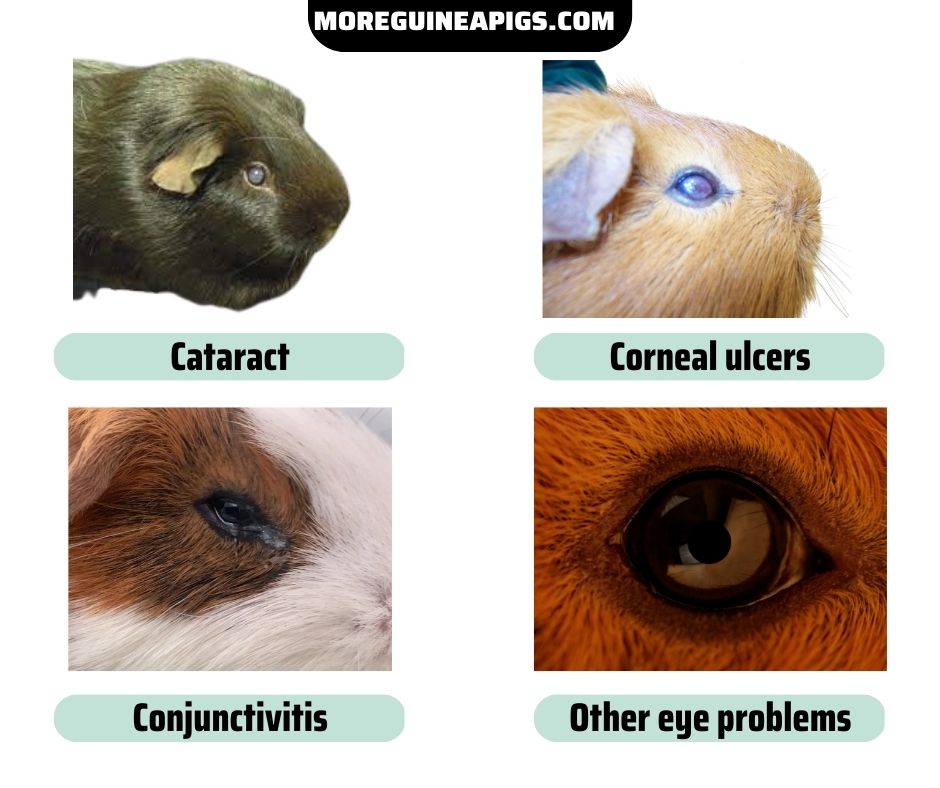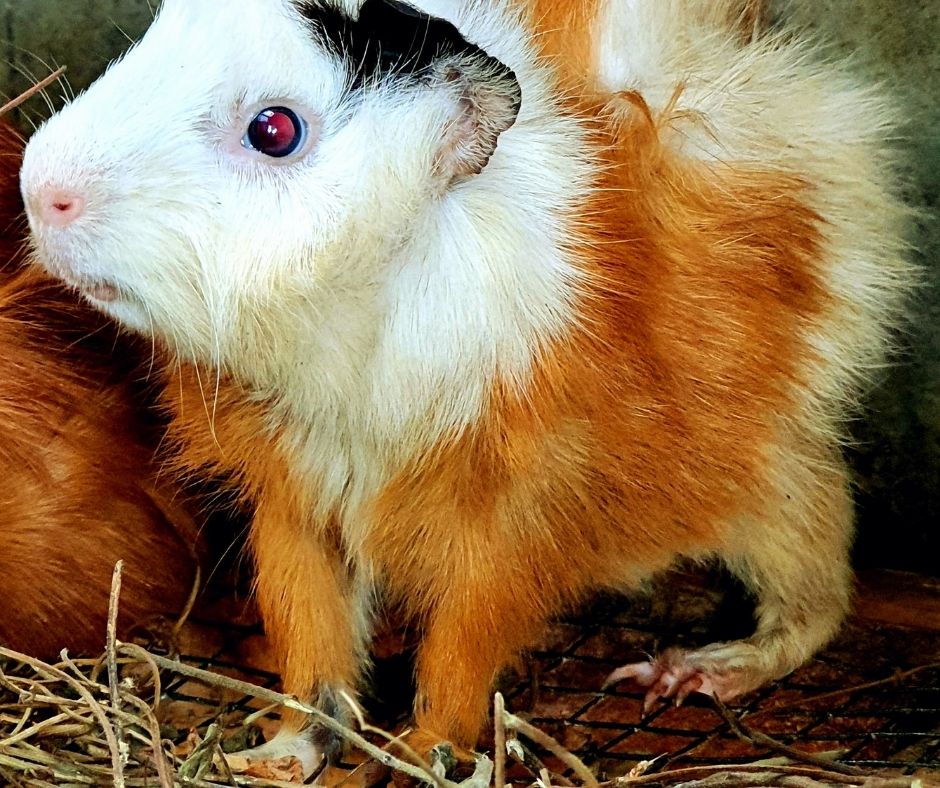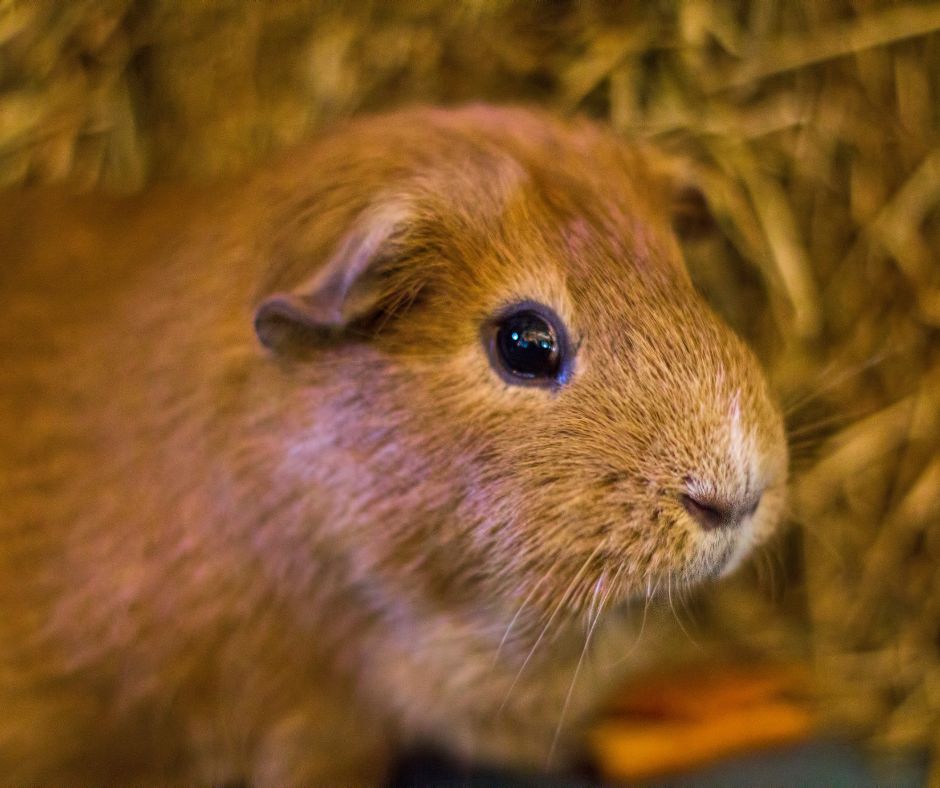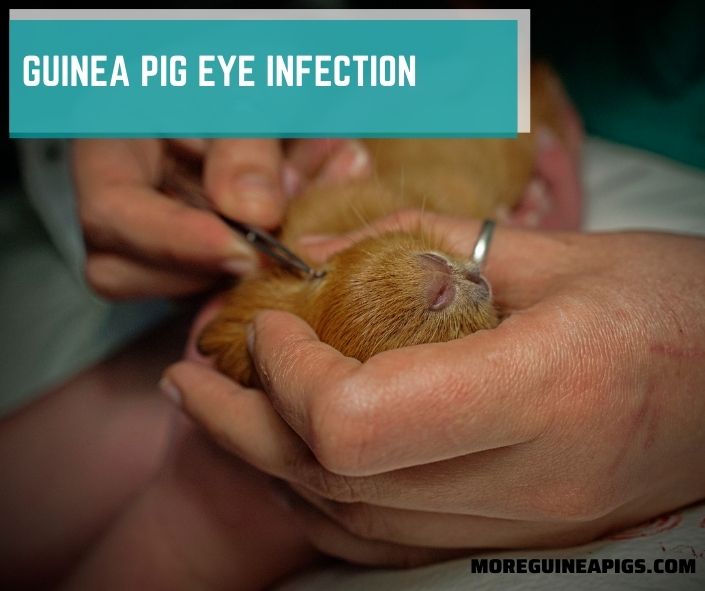Guinea Pig Eye Infection: Signs, Causes, and Treatment
Guinea pigs have a variety of health issues, including eye infections. Eye infections can occur for a variety of causes and are readily preventable.
However, once the pet develops an eye infection, it can lead to a slew of additional issues, making it tough to control the situation.
It’s essential to understand the causes of guinea pig eye infections. We will discuss typical differential signs and treatment of guinea pig eye infection in this article.
So, read the entire article to learn everything there is to know about guinea pig eye infection.
Common Guinea Pig Eye Problems

Guinea pig eyes are susceptible to many eye problems such as cataracts, corneal ulcers, conjunctivitis, kerato-conjunctivitis, Tumors, entropion, ectropion, and tear duct infections.
Some guinea pigs are born with malformed eyes, which are referred to as congenital ocular disorders.
Cataract
It is the inability of the guinea pig’s eye to pass light through the cornea due to the clouding of the cornea. It is not painful, but the cloudiness grows over time, and the guinea pigs lose their ability to see due to the thickening of the layer.
The main cause of cataracts in guinea pigs is low insulin levels or non-functional insulin, which leads to diabetes and cataract formation.
Corneal ulcers
This is a common condition that guinea pigs encounter. An injury or trauma to the cornea causes a corneal ulcer. Trauma can occur as a result of playing and fighting with other pets, or as a result of hay or dry grass with sharp edges.
If left untreated, a corneal ulcer might lead to complete blindness. So, consult a vet as soon as possible.
Conjunctivitis
It is an inflammation of the guinea pig conjunctiva, which is the outer covering of the eye. Kerato-conjunctivitis is a condition that affects the bottom layer of the eye.
Unhygienic circumstances in the guinea pig’s house or cage are a common cause of eye inflammation. Streptococcus and Bordetella bacteria invade the eye and produce inflammation.
Other eye problems
Another issue that guinea pigs face is tumor growth in the eye socket or sclera blood vessels. The development of tumors behind the eyeball in Guinea pigs can cause bulging eyes.
In addition, infections in the tear conduct are common in guinea pigs. As a result, tears are produced excessively or not at all.
Guinea Pig Eye Infection
Infections in the eyes of guinea pigs are caused by bacteria, fungus, and other toxin-producing microbes.
Redness of the eye, low or increased tear production, swelling of the eyelids, the release of viscous fluid from the eyes, and inflammation of the eye layers are the most common signs and symptoms of infection.
When guinea pigs are not kept in a clean environment in cold or warm temperatures, they become infected. Fungi and bacteria thrive in moist environments like pet cages.
After that, fungi spores and bacteria enter the eye, causing illness. Consult a veterinarian, who will prescribe antibiotic eye drops or other drugs based on your pet’s condition.
Signs of Guinea Pig Eye Infection
Signs may differ with the nature of eye problems. If you see hair loss around the eyelids and conjunctiva, it is an indication of inflammation of the conjunctiva.
A tumor behind the eye can cause bulging or outward eyes. A bacterial or fungal infection is indicated by redness and the discharge of viscous fluid from the eyes, whereas a corneal ulcer is indicated by patches or scratches on the eye layers.

Causes of Eye Infection
The development of bacteria and fungus spores into the eyes causes eye infection. In dirty and contaminated cages, bacteria and fungus spores are common.
These germs can easily and swiftly infect a guinea pig’s eye if it has been injured or scratched. So, keep the cages clean and follow preventive measures.
Can a Guinea Pig Die from an Eye Infection?
Yes, infection in the tear ducts and sclera of the eyes can kill the guinea pig. Because bacteria can multiply and flourish in nerves, infecting the nervous system as a whole.
SoSo, a guinea pig dying of eye infection is a rare phenomenon. However, it can lead to complete blindness, a loss of smell, and the loss of an eye.
How to Treat Guinea Pig Eye Infection?
Veterinarians give eye drops, topical ointments, oral medications, and sometimes perform surgery to treat the problem.
Treatment varies depending on the condition and infection, such as when veterinarians do surgery to remove tumors, although microbial infections are frequently treated with antibiotics.
It’s also dangerous to cure eye infections with Homemade remedies and ideas.

Giving Guinea Pig Their Medicine
Whenever you notice signs of an eye infection in a guinea pig, you should take it to the vet. If a guinea pig’s eye is infected, a veterinarian will prescribe antibiotic drops to be used topically as well as an oral medication to treat the infection.
These drops keep the eye moist and prevent friction while removing fungal spores.
Because of an infection in the tear duct, the pressure inside the guinea pig’s eye might sometimes elevate. So, vets give oral tablets to treat the infection.
Veterinarians also check to see if the tear duct has been perforated as a result of a serious infection.
If it does not heal, surgery is required to avoid leaking and excessive tear generation. But Guinea pig eye surgery usually means eye removal. This is done if there are issues causing chronic pain that are not responding to medicine.
How Long Does It Take For a Guinea Eye To Get Healed?
It may take a week for a guinea pig to recover from a bacterial infection. However, if a guinea pig develops a fungal infection, it may take some time to heal because fungal spores grow in moist environments.
So, keeping guinea pigs in a neat and clean environment is necessary when treating fungal infections.
You can detect whether your guinea pig’s eye is healing or not by looking for recovery signs. With time, the hair around the eyes will begin to grow, and the redness around the eyes will fade.
The discharge of viscous fluid in the morning will also stop. As a result, a healthy eye will appear energetic, open, charming, and comfortable in its socket.
How to Prevent Guinea Pig Eye Infection
Eye infections can be easily avoided by following some simple safety and precautionary measures. There are minimum chances of infection in a clean, low-crowded, and well-ventilated cage.
Here are some helpful hints for avoiding eye infections and problems.
Regularly Clean Guinea Pig’s Cage
Regular cleaning of the guinea pig cage is important to prevent eye infections. Bacterial and fungal growth begins in a polluted and filthy cage. So, after feeding your pet, clean the cage, and clean the entire cage once a week.
Avoid Fights and Unnecessary Injuries
Fighting with cage mates can result in corneal damage or injury, which can lead to corneal ulcers. So, introduce new guinea pigs gradually and keep rabbits and guinea pigs in separate cages.
Male guinea pigs who have not been neutered become aggressive quickly, therefore neuter them to lower their hormone levels and prevent aggression.
Do Regular Health Checks
Regular checkups with a clinical veterinarian are the best way to keep guinea pigs healthy and happy.
A veterinarian will examine eyes by performing tests such as tear tests, ocular pressure tests, and x-ray. X-ray is performed to check how extensive the tumour is and which structures are affected.

Conclusion
Guinea pigs are prone to eye infections. To prevent the growth of bacteria and fungi, keep guinea pigs in a clean, well-ventilated cage. It is vital to consult a veterinarian if you notice indications of an eye infection.
Otherwise, the infection could progress and become difficult to cure, resulting in the guinea pig losing an eye.






